|
John Tyman's Cultures in Context Series Torembi and the Sepik A Study of Village Life in New Guinea |
|
Introduction Topic No. 5: Collecting Sago |
|
John Tyman's Cultures in Context Series Torembi and the Sepik A Study of Village Life in New Guinea |
|
Introduction Topic No. 5: Collecting Sago |
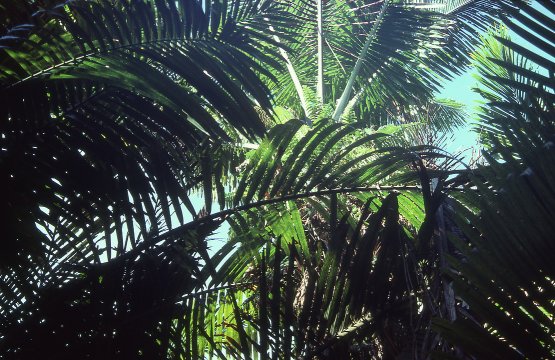 |
| 053. Many different kinds of food can be found in the Torembi region, but sago is the best known and it is also the most important. It is obtained from the trunks of sago palms like this. |
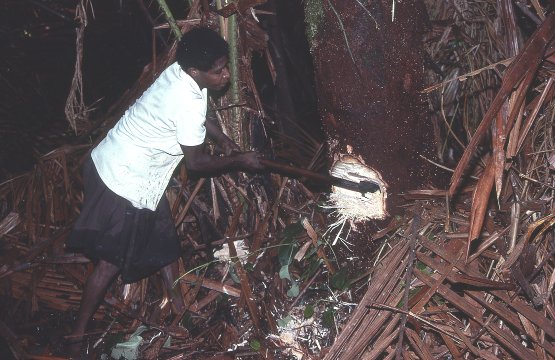 |
| 056. The first thing the woman has to do is chop down the tree, which will typically be between one half and three-quarters of a metre in diameter. |
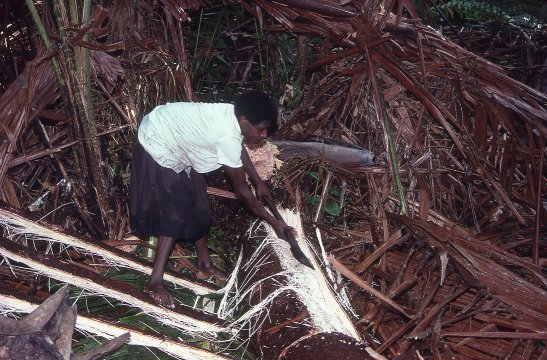 |
| 057. She then removes some of the bark, wedging it beneath the trunk to provide a place on which to sit. |
 |
| 058. To break up the log, she will pound it with her scraper for hours on end, singing as she works … to maintain a steady rhythm. |
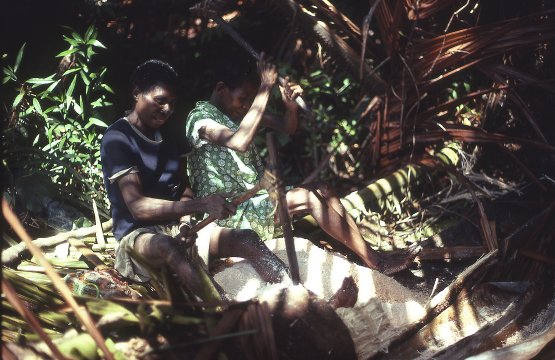 |
| 059. Women work in pairs, when they can trust their neighbour to keep up the pace: but the strongest women often work alone. |
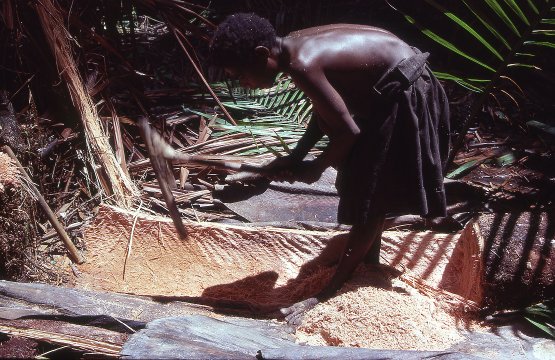 |
| 060. Eventually the whole trunk, or at least that day's portion, is reduced to a hollow shell. |
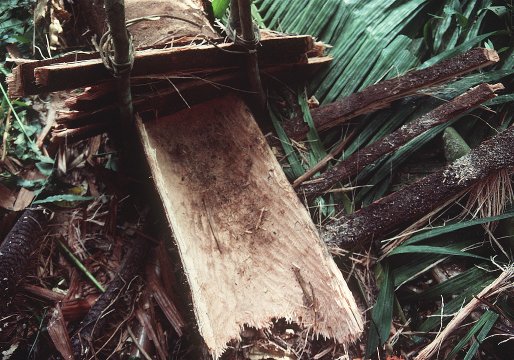 |
| 061. The remainder will then be covered up to keep pigs away till she returns later in the week to finish it off. |
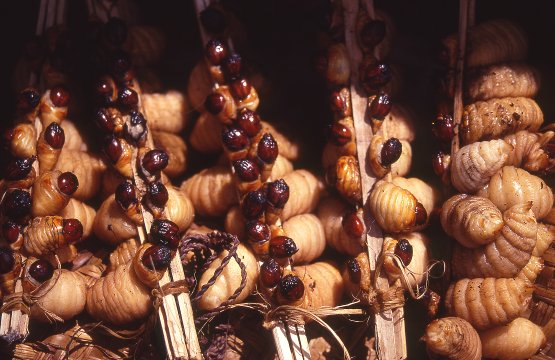 |
| 062. Some sections may be left to rot, however, to encourage the growth of sago grubs, which will themselves be harvested eventually… and packaged for sale at a local market. |
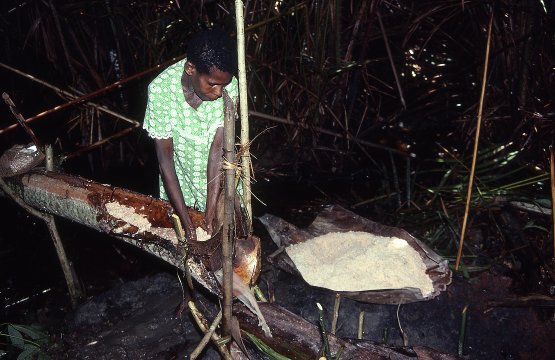 |
| 063. The fibres loosened by scraping are full of sago starch in powder form, and to separate this off, the women will have built a washing platform close by. |
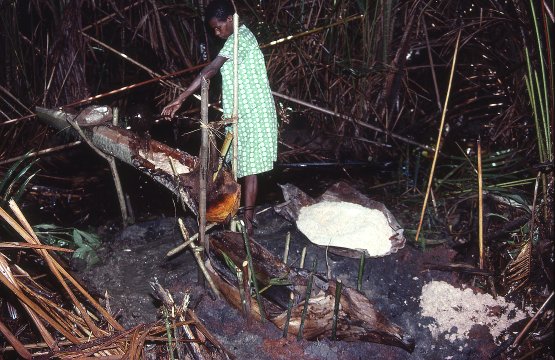 |
| 064. A load of fibre is first dumped into the trough, which is made from the base of a palm frond; and water is added using a ladle. |
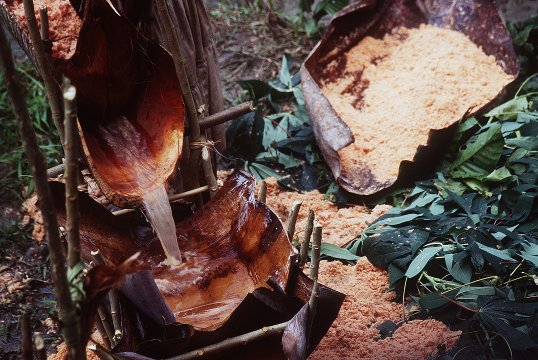 |
| 066. There are several levels to this silt trap. Most of the sago collects in the lowest one as the water runs from one level to the next, getting slower all the time. |
 |
| 068. When they’ve collected enough sago for that day, the women will empty out the silt trap. The wet powder is dumped into a string bag lined with leaves. |
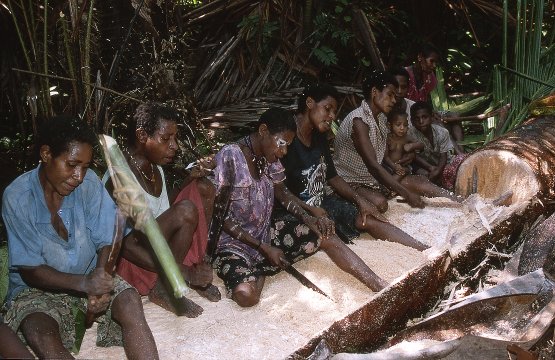 |
| 070. Occasionally a team of women, usually related clan members, will band together to raise funds for a community project. |
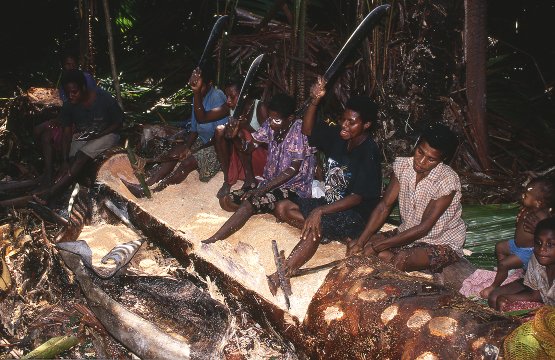 |
| 071. In this case they felled a large tree and scraped it in unison, singing as they worked … to ensure a common rhythm. |
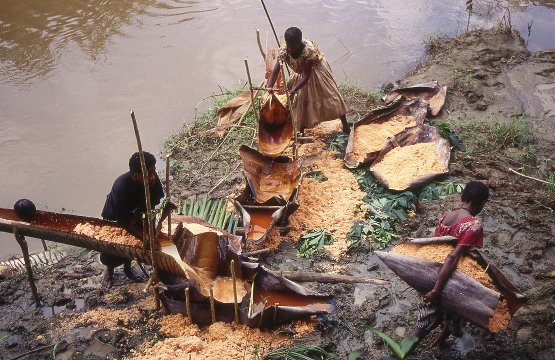 |
| 072. Other women carried the sago to the riverbank some 20 metres distant, where a series of washing platforms had been built the day before. Water was readily available from the river. |
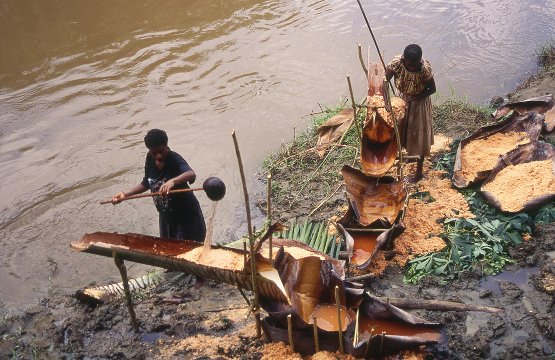 |
| 073. The women worked in teams. Some scraped, other carried the sago away, and others washed it. |
![]()

![]()
Back to
Cultures in Context Intro: Photos & Recordings
![]()
Text, photos and recordings
by John Tyman
Intended for Educational Use
Only.
Copyright Pitt Rivers Museum,
Oxford University, 2010.
Contact Dr.
John Tyman for more information regarding licensing.
![]()
www.hillmanweb.com
Photo processing, Web page layout,
formatting, and complementary research by
William Hillman ~ Brandon, Manitoba
~ Canada